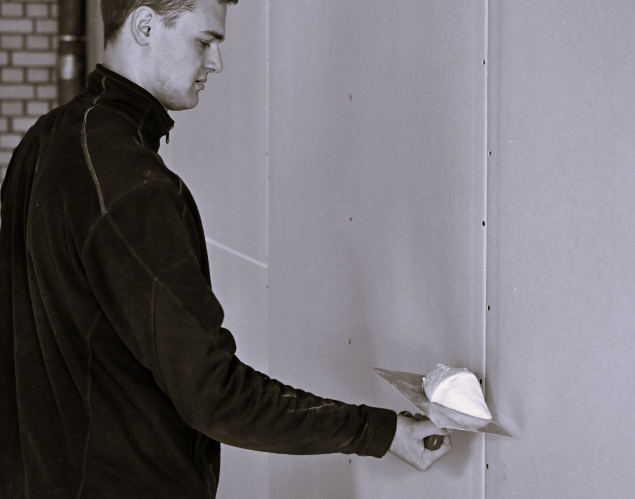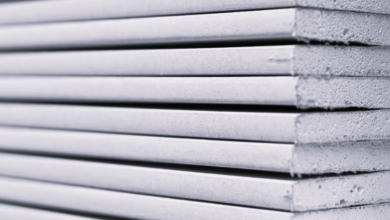Forgot to Tape Drywall Seams?

You must always use drywall tape while mudding drywall joints. Whether you prefer paper tape or fiberglass mesh tape is irrelevant.
However, if you do use tape, you can be sure that your joints will look smooth and last for many years. However, it’s common for us to make mistakes like forgetting to tape a drywall junction because we are only human.
It could have been your first time mudding a drywall junction, or you might have been rushing to finish the project.
It makes sense. I made the decision to provide a comprehensive tutorial on all you need to know about forgetting to tape drywall joints because of this.
What Happens If You Don’t Remember to Tape the Drywall Joint?
-
Step 1: Determine which joints you neglected to tape.
You need to determine which joints you haven’t taped. You will need to repeat the next steps on all of the drywall seams if you did not use tape for the entire process.
-
Step 2: Sand or scrape the joint compound that is already there.
In order to make space for applying drywall tape, you will need to remove the current joint compound. Depending on the state of the current joint compound, you can choose between two methods.
Sanding it down until you reach the drywall seam or have enough depth to fit the tape is necessary if it’s already dry. To prevent harming the drywall, carefully scrape the mud with a putty knife if it is still wet.
-
Step 3: Apply the Drywall Tape
Apply the drywall tape over the exposed junction now that you have space for it. Compared to paper tape, fiberglass tape is significantly simpler to install.
Use fiberglass rather than paper tape if you’re not particularly skilled at installing drywall. Since that is not the main topic of today’s blog, I won’t go into great detail on this comparison. Therefore, make sure the tape is covering the joint on all sides.
-
Step 4: Re-mud the drywall junction
Reapply the joint compound to the drywall seam that has been taped. Apply the same drywall knife as before.
Make sure the drywall mud covers the tape and joint equally. For a smoother finish, feather the joint compound in the final step.
-
Step 5: To achieve a flawless finish, let it dry and sand it again.
Wait until the drywall mud has completely dried before sanding it down again for a smoother finish, since it dries in a day.
You have to start over from the beginning if you neglect to tape the drywall junction. There isn’t a short cut. I am aware that the drywall seam requires a lot of work to sand, tape, and re-mud.
However, it will spare you from later expensive repairs. Additionally, knowing that your drywall seams are tape-reinforced will give you peace of mind.
If you forget to tape the drywall joint, what could go wrong?
When mudding seams, drywall tape is required for a variety of reasons. Here are some examples of what could go wrong if you forget to use this material to demonstrate its value:
- The junction will be more prone to cracking. One application for drywall tape is to strengthen the joint compound’s structural integrity. Without it, temperature fluctuations and structural motions could cause the joint compound to break.
- It will be challenging to hide the junction since drywall mud or joint compound alone is insufficient to hide drywall seams. And drywall tape can help with that.
The joint between the drywall will remain apparent after painting if you neglect to utilize it. The final aesthetics will be hampered if the joint is still evident.
- Moisture problems could arise: Another reason drywall tape is used is to keep moisture from seeping through the spaces between drywall. Moisture can seep in and harm internal components or cause mold development if it is not used.
- These joints are more challenging to fix: Since nothing is holding the joint compound together, repairs are more challenging on drywall joints that haven’t been taped.
- Tapeless drywall joints are structurally weak; they are prone to damage and early failure due to their lack of reinforcement.
The aforementioned illustrates how neglecting to tape a drywall junction can result in numerous issues down the road. Use the procedures I described above to fix the issue as soon as possible if you neglected to tape the joints.
Is It Possible to Use Drywall Tape on Top of Dried Mud?
You could think that covering the dried mud with tape will solve the issue if you have forgotten to tape a drywall seam. That won’t work, as much as I hate to be the one to deliver terrible news.
Tape should be put on before drywall mud. Additionally, for these two to form a solid binding, they must dry together.
Adhesion will be your first challenge if you choose to use drywall tape over dried mud. Its lifespan will be shortened because it won’t connect firmly. Creating an irregular surface that is impossible to sand down is the second challenge.
To reiterate what I said earlier, there is no quick fix for this issue. To make space for the tape, sand the dry mud. After applying it, re-mud. That’s the only way to resolve this problem.
What Causes People to Neglect Taping a Drywall Joint?
The following are the most frequent causes of people forgetting to tape a drywall junction, based on my research:
- Inexperience: If you’ve never installed drywall before, you might not know the benefits of tape. Therefore, when gathering materials for this project, you can forget to purchase it, let alone use it.
- Hurrying: You can occasionally forget to tape the seams if you’re in a rush to complete the drywall installation task. One of the primary reasons why individuals avoid using drywall tape is because of this.
- Overconfidence: I was shocked to see that some people support drywall joints without tape. You may decide not to use tape if you think it is not necessary for a particular drywall joint for your particular situation.
- Adhering to the wrong instructions: There are numerous online tutorials on plasterboard installation. You can inadvertently forget to do this if you come across an incorrect one that omits the taping step.
Never rely solely on one person’s counsel; instead, always follow the recommendations of reliable professionals. Obtain a second and third opinion at all times.
- Inability to concentrate: This task necessitates a high level of attention to detail. You might forget to tape the drywall joints and recall when you’re finished if you lose concentration in the middle of the process.
Does a Tapeless Drywall Joint Impact a Property’s Resale Value?
Indeed, it does! The apparent and uneven seams can make your wall seem awful if you forget to tape the drywall joints. Additionally, it will give the impression that the home’s finishing is not professionally done.
Furthermore, you don’t want this to be the first thing people see when they come to look at your property. All of the disadvantages I mentioned above apply to tapeless drywall joints. And believe me when I say that no buyer wants to take on such issues.
Therefore, please remember to tape drywall joints if you’re making repairs to your house with the hopes of selling it in the future.
And if you do, take use of the technique I’ve given you to address that issue before your home’s market value drops.

